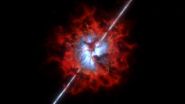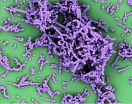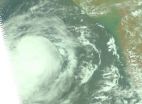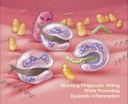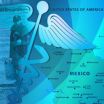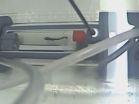(Press-News.org) The world of astronomy has changed. An astronomer used to have to travel to a remote location and endure long, cold nights, patiently guiding a telescope to collect precious photons of light. Now, a proliferation of online archives allows astronomers to make discoveries from the comfort of their own offices.
By mining such archives, a team of astronomers led by Ivana Damjanov of the Harvard-Smithsonian Center for Astrophysics (CfA) has found a treasure trove of "red nugget" galaxies. These galaxies are compact and densely packed with old, red stars. Their abundance provides new constraints on theoretical models of galaxy formation and evolution.
"These red nugget galaxies were hiding in plain view, masquerading as stars," says Damjanov. She presented the team's research today at a meeting of the Canadian Astronomical Society (CASCA) in Quebec, QC.
When the universe was young, dense, massive galaxies nicknamed "red nuggets" were common. These galaxies are ten times more massive than the Milky Way, but their stars are packed into a volume a hundred times smaller than our Galaxy.
Mysteriously, astronomers searching the older, nearer universe could not find any of these objects. Their apparent disappearance, if real, signaled a surprising turn in galaxy evolution.
To find nearby examples, Damjanov and her colleagues Margaret Geller, Ho Seong Hwang, and Igor Chilingarian (Smithsonian Astrophysical Observatory) combed through the database of the largest survey of the universe, the Sloan Digital Sky Survey. The red nugget galaxies are so small that they appear like stars in Sloan photographs, due to blurring from Earth's atmosphere. However, their spectra give away their true nature.
The team identified several hundred red nugget candidates in the Sloan data. Then they searched a variety of online telescope archives in order to confirm their findings. In particular, high-quality images from the Canada-France-Hawaii Telescope and the Hubble Space Telescope showed that about 200 of the candidates were galaxies very similar to their red-nugget cousins in the distant, young universe.
"Now we know that many of these amazingly small, dense, but massive galaxies survive. They are a fascinating test of our understanding of the way galaxies form and evolve," explains Geller.
The large number of red nuggets discovered in Sloan told the team how abundant those galaxies were in the middle-aged universe. That number then can be compared to computer models of galaxy formation. Different models for the way galaxies grow predict very different abundances.
The picture that matches the observations is one where red nuggets begin their lives as very small objects in the young universe. During the next ten billion years some of them collide and merge with other, smaller and less massive galaxies. Some red nuggets manage to avoid collisions and remain compact as they age. The result is a variety of elliptical galaxies with different sizes and masses, some very compact and some more extended.
"Many processes work together to shape the rich landscape of galaxies we see in the nearby universe," says Damjanov.
INFORMATION:
Mining data archives yields haul of 'red nuggets'
2014-06-11
ELSE PRESS RELEASES FROM THIS DATE:
Contextuality puts the 'magic' in quantum computing
2014-06-11
A new theoretical advance explains where the power of quantum computation comes from, and will help researchers design and build better computers and algorithms.
The strange properties of quantum mechanics give quantum computers the potential to perform some computations exponentially faster than conventional computers. But where the extra power comes from – and how best to take advantage of it – is in many ways still an open question.
A new paper in the journal Nature by CIFAR Fellow Joseph Emerson of the program in Quantum Information Science, along with colleagues ...
Gigantic explosion buried in dust: ALMA probes environment around gamma ray bursts
2014-06-11
Using the Atacama Large Millimeter/submillimeter Array (ALMA), a team of researchers reports the first-ever detection of molecular gas -- the fuel for star formation -- in two galaxies that were previously rocked by gamma ray bursts (GRBs), the brightest explosions in the Universe. These new observations revealed that the molecular gas was concentrated toward the centers of the galaxies, while the GRBs occurred in unusual environments that were surprisingly bereft of gas yet rich in dust.
The researchers speculate that the dearth of molecular gas around the GRBs was due ...
Breakthrough study sheds new light on best medication for children with seizures
2014-06-11
DETROIT – A recently published clinical study in the Journal of the American Medical Association has answered an urgent question that long puzzled ER pediatricians: Is the drug lorazepam really safer and more effective than diazepam – the U.S. Food and Drug Administration-approved medication as first line therapy most often used by emergency room doctors to control major epileptic seizures in children?
The answer to that question – based on a double-blind, randomized clinical trial that compared outcomes in 273 seizure patients, about half of whom were given lorazepam ...
Why aren't product designers considering activity trackers for older adults?
2014-06-11
Commercially available activity-monitoring apps, Web sites, and wearable devices allow for easy self-management of health and wellness. This technology may be particularly helpful for older adults, who can improve their cognitive function through proper diet and exercise. Despite tracking monitors' growing popularity and potential benefits, product designers rarely consider those over 65 to be a viable user group, and new human factors/ergonomics research indicates that the technology presents several usability challenges for this population.
"Many older adults have ...
A key step toward a safer strep vaccine
2014-06-11
An international team of scientists, led by researchers at the University of California, San Diego School of Medicine, have identified the genes encoding a molecule that famously defines Group A Streptococcus (strep), a pathogenic bacterial species responsible for more than 700 million infections worldwide each year.
The findings, published online in the June 11 issue of Cell Host & Microbe, shed new light on how strep bacteria resists the human immune system and provides a new strategy for developing a safe and broadly effective vaccine against strep throat, necrotizing ...
A NASA view of Tropical Cyclone Nanauk in the Arabian Sea
2014-06-11
Tropical Cyclone 02A has consolidated and strengthened over a 24 hour period between June 10 and 11 and an image from NASA's Aqua satellite showed a more rounded tropical storm, despite wind shear.
As Tropical Cyclone 02A consolidated and strengthened into a tropical storm it was re-named Nanauk. NASA's Aqua satellite passed over Nanauk on June 11 at 08:29 UTC (4:29 a.m. EDT) and the Atmospheric Infrared Sounder (AIRS) captured an infrared and near-infrared image of the storm. The near-infrared image provided an almost visible look at the clouds that revealed a well-rounded ...
Gum disease bacteria selectively disarm immune system, Penn study finds
2014-06-11
The human body is comprised of roughly 10 times more bacterial cells than human cells. In healthy people, these bacteria are typically harmless and often helpful, keeping disease-causing microbes at bay. But, when disturbances knock these bacterial populations out of balance, illnesses can arise. Periodontitis, a severe form of gum disease, is one example.
In a new study, University of Pennsylvania researchers show that bacteria responsible for many cases of periodontitis cause this imbalance, known as dysbiosis, with a sophisticated, two-prong manipulation of the human ...
Migrating north may trigger immediate health declines among Mexicans
2014-06-11
PRINCETON, N.J.—Mexican immigrants who relocate to the United States often face barriers like poorly paying jobs, crowded housing and family separation. Such obstacles – including the migration process itself – may be detrimental to the health of Mexican immigrants, especially those who have recently moved.
A study led by Princeton University's Woodrow Wilson School of Public and International Affairs finds that Mexican immigrants who relocate to the United States are more likely to experience declines in health within a short time period compared with other Mexicans. ...
New study finds Internet not responsible for dying newspapers
2014-06-11
We all know that the Internet has killed the traditional newspaper trade, right? After all, until the general population started interacting with the web in the mid-90s, the newspaper business was thriving—offering readers top notch journalism and pages of ads.
But a recently-published study finds that we may be all wrong about the role of the Internet in the decline of newspapers.
According to research by University of Chicago Booth School of Business Professor Matthew Gentzkow, assumptions about journalism are based on three false premises.
In his new paper, "Trading ...
Study shows Deepwater Horizon crude oil impairs swimming performance of juvenile mahi-mahi
2014-06-11
VIDEO:
This shows juvenile Mahi-mahi in swim tunnel, which allows scientists to monitor metabolic rate swim performance.
Click here for more information.
MIAMI – A new study led by University of Miami (UM) Rosenstiel School of Marine and Atmospheric Science scientists showed up to a 37% decrease in overall swimming performance of Deepwater Horizon oil-exposed juvenile mahi-mahi. The findings reveal the toxic effects of crude oil on ecologically and commercially valuable fish ...

